Dimensions for Game Cartridges: Difference between revisions
Jump to navigation
Jump to search
| Line 1,091: | Line 1,091: | ||
{| class="wikitable"|- | {| class="wikitable"|- | ||
! Console | ! Console | ||
!align="left"| | !align="left"| Height (mm) | ||
!align="left"| | !align="left"| Width (mm) | ||
!align="left"| Thickness (mm) | |||
!align="left"| | |||
!align="left"| Notes | !align="left"| Notes | ||
!align="left"| Confirmed by | !align="left"| Confirmed by | ||
Revision as of 15:00, 31 January 2023
| DRAFT (WORK IN PROGRESS ARTICLE - PLEASE DO NOT RELY ON THE INFORMATION BELOW UNTIL MARKED AS COMPLETED) |
First generation of consoles
| Console | Height (mm) | Width (mm) | Thickness (mm) | Notes | Confirmed by | Image |
|---|---|---|---|---|---|---|
| Magnavox Odyssey | ? | ? | ? | ? | ? | ? |
| Magnavox Odyssey 100 | ? | ? | ? | ? | ? | ? |
| Magnavox Odyssey 200 | ? | ? | ? | ? | ? | ? |
| Magnavox Odyssey 300 | ? | ? | ? | ? | ? | ? |
| Magnavox Odyssey 400 | ? | ? | ? | ? | ? | ? |
| Magnavox Odyssey 500 | ? | ? | ? | ? | ? | ? |
| Magnavox Odyssey 4305 | ? | ? | ? | ? | ? | ? |
| Magnavox Odyssey 2000 | ? | ? | ? | ? | ? | ? |
| Magnavox Odyssey 3000 | ? | ? | ? | ? | ? | ? |
| Magnavox Odyssey 4000 | ? | ? | ? | ? | ? | ? |
| Philips Odyssey 200 | ? | ? | ? | ? | ? | ? |
| Philips Odyssey 2001 | ? | ? | ? | ? | ? | ? |
| Philips Odyssey 2100 | ? | ? | ? | ? | ? | ? |
| TV Tennis Electrotennis (Epoch) | ? | ? | ? | ? | ? | ? |
| Atari Home Pong (Model C-100) | ? | ? | ? | ? | ? | ? |
| Atari Super Pong (Model C-140) | ? | ? | ? | ? | ? | ? |
| Coleco Telstar | ? | ? | ? | ? | ? | ? |
| Coleco Telstar Classic | ? | ? | ? | ? | ? | ? |
| Coleco Telstar Deluxe | ? | ? | ? | ? | ? | ? |
| Coleco Telstar Ranger | ? | ? | ? | ? | ? | ? |
| Coleco Telstar Alpha | ? | ? | ? | ? | ? | ? |
| Coleco Telstar Colormatic | ? | ? | ? | ? | ? | ? |
| Coleco Telstar Regent | ? | ? | ? | ? | ? | ? |
| Coleco Telstar Sportsman | ? | ? | ? | ? | ? | ? |
| Coleco Telstar Combat! | ? | ? | ? | ? | ? | ? |
| Coleco Telstar Colortron | ? | ? | ? | ? | ? | ? |
| Coleco Telstar Marksman | ? | ? | ? | ? | ? | ? |
| Coleco Telstar Galaxy | ? | ? | ? | ? | ? | ? |
| Coleco Telstar Gemini | ? | ? | ? | ? | ? | ? |
| Coleco Telstar Arcade | ? | ? | ? | ? | ? | ? |
| Nintendo Color TV - Game 6 | ? | ? | ? | ? | ? | ? |
Second generation of consoles
| Console | Height (mm) | Width (mm) | Thickness (mm) | Notes | Confirmed by | Image |
|---|---|---|---|---|---|---|
| Atari 2600 | ? | ? | ? | ? | ? | ? |
| Sears Video Arcade II/Atari 2800 | ? | ? | ? | ? | ? | ? |
| Magnavox Odyssey 2 | ? | ? | ? | ? | ? | ? |
| Philips Videopac G7000 (European release of Odyssey 2) | ? | ? | ? | ? | ? | ? |
| Mattel Intellivision | ? | ? | ? | ? | ? | ? |
| Epoch Cassette Vision | ? | ? | ? | ? | ? | ? |
| Mattel Intellivision II | ? | ? | ? | ? | ? | ? |
| Coleco ColecoVision | ? | ? | ? | ? | ? | ? |
| Atari 5200 (Four controller port model) * | ? | ? | ? | ? | ? | ? |
| Atari 5200 (Two controller port model) * | ? | ? | ? | ? | ? | ? |
| GCE/MB Vectrex | ? | ? | ? | ? | ? | ? |
Third generation of consoles
| Console | Height (mm) | Width (mm) | Thickness (mm) | Notes | Confirmed by | Image |
|---|---|---|---|---|---|---|
| Nintendo Entertainment System (US) * | ? | ? | ? | ? | ? | ? |
| Nintendo Entertainment System (PAL) * | ? | ? | ? | ? | ? | ? |
| Famicom * | ? | ? | ? | ? | ? | ? |
| AV Famicom * | ? | ? | ? | ? | ? | ? |
| Famicom Disk System * | ? | ? | ? | ? | ? | ? |
| Twin Famicom * | ? | ? | ? | ? | ? | ? |
| Sega SG-1000 * | ? | ? | ? | ? | ? | ? |
| Sega SG-1000 II * | ? | ? | ? | ? | ? | ? |
| Sega Mark III * | ? | ? | ? | ? | ? | ? |
| Sega Master System * | ? | ? | ? | ? | ? | ? |
| Sega Master System (JP, MK-2000) * | ? | ? | ? | ? | ? | ? |
| Atari 7800 | ? | ? | ? | ? | ? | ? |
| Casio PV-1000 * | ? | ? | ? | ? | ? | ? |
| Epoch Super Cassette Vision * | ? | ? | ? | ? | ? | ? |
| Amstrad GX4000 * | ? | ? | ? | ? | ? | ? |
Fourth generation of consoles
| Console | Height (mm) | Width (mm) | Thickness (mm) | Notes | Confirmed by | Image |
|---|---|---|---|---|---|---|
| Atari Lynx * | ? | ? | ? | ? | ? | ? |
| NEC TurboGrafx 16 * | ? | ? | ? | ? | ? | ? |
| PC Engine * | ? | ? | ? | ? | ? | ? |
| NEC PC Engine CD * | ? | ? | ? | ? | ? | ? |
| NEC TurboGrafx-CD * | ? | ? | ? | ? | ? | ? |
| NEC SuperGrafx | ? | ? | ? | ? | ? | ? |
| NEC TurboExpress/PC Engine GT | ? | ? | ? | ? | ? | ? |
| NEC TurboDuo/PC Engine Duo | ? | ? | ? | ? | ? | ? |
| NEC Super CD-ROM2 | ? | ? | ? | ? | ? | ? |
| NEC PC Engine LT | ? | ? | ? | ? | ? | ? |
| NEC PC Engine Duo-R/Duo-RX | ? | ? | ? | ? | ? | ? |
| Sega Genesis (model 1) * | ? | ? | ? | ? | ? | ? |
| Sega Mega Drive (model 1) * | ? | ? | ? | ? | ? | ? |
| Sega Genesis (model 2) | ? | ? | ? | ? | ? | ? |
| Sega Genesis 3 | ? | ? | ? | ? | ? | ? |
| Sega Mega Jet | ? | ? | ? | ? | ? | ? |
| Sega Genesis Nomad | ? | ? | ? | ? | ? | ? |
| Sega 32X | ? | ? | ? | ? | ? | ? |
| Sega/Victor Wondermega RG-M1 | ? | ? | ? | ? | ? | ? |
| Sega CDX | ? | ? | ? | ? | ? | ? |
| JVC X'Eye/Victor Wondermega RG-M2 | ? | ? | ? | ? | ? | ? |
| Sega Game Gear * | ? | ? | ? | ? | ? | ? |
| Nintendo Game Boy | ? | ? | ? | ? | ? | ? |
| Nintendo Game Boy Pocket | ? | ? | ? | ? | ? | ? |
| Super Nintendo (US) | ? | ? | ? | ? | ? | ? |
| Super Famicom * | ? | ? | ? | ? | ? | ? |
| Super Nintendo (PAL) * | ? | ? | ? | ? | ? | ? |
| SNK Neo Geo AES * | ? | ? | ? | ? | ? | ? |
| SNK Neo Geo CD | ? | ? | ? | ? | ? | ? |
| Pioneer LaserActive | ? | ? | ? | ? | ? | ? |
Fifth generation of consoles
| Console | Height (mm) | Width (mm) | Thickness (mm) | Notes | Confirmed by | Image |
|---|---|---|---|---|---|---|
| Commodore Amiga CD32 | ? | ? | ? | ? | ? | ? |
| Panasonic 3DO | ? | ? | ? | ? | ? | ? |
| Atari Jaguar * | ? | ? | ? | ? | ? | ? |
| Atari Jaguar CD * | ? | ? | ? | ? | ? | ? |
| Bandai Playdia * | ? | ? | ? | ? | ? | ? |
| Sega Saturn | ? | ? | ? | ? | ? | ? |
| Sony PlayStation | ? | ? | ? | ? | ? | ? |
| Sony PSone | ? | ? | ? | ? | ? | ? |
| NEC PC-FX | ? | ? | ? | ? | ? | ? |
| Casio Loopy | ? | ? | ? | ? | ? | ? |
| Apple Pippin | ? | ? | ? | ? | ? | ? |
| Nintendo 64 | ? | ? | ? | ? | ? | ? |
Sixth generation of consoles
| Console | Height (mm) | Width (mm) | Thickness (mm) | Notes | Confirmed by | Image |
|---|---|---|---|---|---|---|
| Game Boy Advance | ? | ? | ? | ? | ? | ? |
| Game Boy Advance SP | ? | ? | ? | ? | ? | ? |
| Game Boy Micro | ? | ? | ? | ? | ? | ? |
| Sega Dreamcast | ? | ? | ? | ? | ? | ? |
| Sony PlayStation 2 (original) | ? | ? | ? | ? | ? | ? |
| Sony PlayStation 2 (slim, SCPH-7xxxx) | ? | ? | ? | ? | ? | ? |
| Sony PlayStation 2 (slim, SCPH-9000x) | ? | ? | ? | ? | ? | ? |
| VM Labs Nuon | ? | ? | ? | ? | ? | ? |
| Microsoft Xbox | ? | ? | ? | ? | ? | ? |
| Nintendo GameCube | ? | ? | ? | ? | ? | ? |
Seventh generation of consoles
| Console | Height (mm) | Width (mm) | Thickness (mm) | Notes | Confirmed by | Image |
|---|---|---|---|---|---|---|
| Nintendo DS | ? | ? | ? | ? | ? | ? |
| Nintendo DS Lite | ? | ? | ? | ? | ? | ? |
| Nintendo DSi series | ? | ? | ? | ? | ? | ? |
| Sony PSP (except N1000/Go) | ? | ? | ? | ? | ? | ? |
| Sony PSP-N1000 series (Go) | ? | ? | ? | ? | ? | ? |
| Nintendo Wii | ? | ? | ? | ? | ? | ? |
| Mattel HyperScan | ? | ? | ? | ? | ? | ? |
| Microsoft Xbox 360 (Xenon/Zephyr) | ? | ? | ? | ? | ? | ? |
| Microsoft Xbox 360 (Falcon/Opus) | ? | ? | ? | ? | ? | ? |
| Microsoft Xbox 360 (Jasper/Kronos) | ? | ? | ? | ? | ? | ? |
| Microsoft Xbox 360 S | ? | ? | ? | ? | ? | ? |
| Microsoft Xbox 360 E | ? | ? | ? | ? | ? | ? |
| Sony PlayStation 3 | ? | ? | ? | ? | ? | ? |
| Sony PlayStation 3 standard controller/keyboard/headset | ? | ? | ? | ? | ? | ? |
| Sony PlayStation 3 Move controller | ? | ? | ? | ? | ? | ? |
Eighth generation of consoles
| Console | Height (mm) | Width (mm) | Thickness (mm) | Notes | Confirmed by | Image | |||||||
|---|---|---|---|---|---|---|---|---|---|---|---|---|---|
| Nintendo 3DS/2DS Series incl. New | 4.6 V DC | 900 mA | ? | ? | ? | N/A, connector is keyed | WAP-002 | Still unofficially USB compatible | Proprietary connector | External | Eventually replaced with cost-cutting revision (thinner cable) | ||
| Sony PS Vita | 5 V DC | 1 A (?) | ? | ? | ? | USB-A | PCH-ZAC1 | Official USB charging | Electrically USB-A, but in recessed position requiring a long and specially notched plug | External | Connects to model specific data cable (1000 series: proprietary, 2000 series: micro-USB B) | ||
| Sony PS Vita TV | 5 V DC | 2000 mA | ? | ? | ? | Negative ground | PDEL-100 | PSP power bricks and their equivalents | EIAJ-02 (4.0/1.7 mm barrel) | External | Recycled from developer Vita | ||
| Nintendo Wii U | 15V DC | 5 A | 34 W[8] | 0.4 W | 0.4 W | N/A, connector is keyed | WUP-002 | ? | Proprietary connector | External | Connector is very similar to the original Wii but is not compatible (colored yellow for identification). Unofficially[9] multivoltage. | ||
| Nintendo Wii U GamePad | 4.75 V DC | 1.6 A | ? | ? | ? | N/A, connector is keyed | WUP-011 | Still unofficially USB compatible | Proprietary connector | External | Just barely enlarged 2/3DS/i/XL connector. Unofficially multivoltage. | ||
| Sony PlayStation 4 (original) | Input: 100-240V AC | ? | 95.1 W (12XX)
115.1 W (11XX) 137.3 W (1016A)[10] |
0.3 W | 5.2 W (12XX)
7.3 W (11XX) 7.8 W (1016A) |
? | ? | ? | C7 non-polarized | Internal | |||
| Sony PlayStation 4 (slim) | Input: 100-240V AC | ? | 78.2 W (22XX)
75.2 W (21XX) 82.8 W (20XX)[10] |
0.2 W | 5.4 W (22XX)
5.8 W (21XX) 5.5 W (20XX) |
? | ? | ? | C7 non-polarized | Internal | |||
| Sony PlayStation 4 Pro | Input: 100-240V AC | ? | 126 W (70XX)
139 W (71XX) 146 W (72XX)[11] |
0.2 W | 8.2 W (70XX)
7.4 W (71XX) 6.4 W (72XX) |
? | ADP-300CR / ADP-300ER / ADP-300FR | ? | C17 (CUH-7000 and -7100 models), C7 non-polarized (CUH-7200 models) | Internal | The PS4 Pro has an internal power supply module, which can be accessed once the console is disassembled. Some revisions connected to an electrical outlet using a PC lead, while some used a Figure 8 AC cord. | 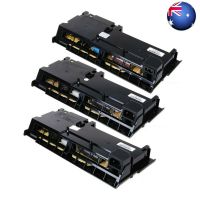
| |
| Microsoft Xbox One | Input: 100-127V AC (JP/US), Output: 12V DC, 5V DC | 16.5 A (12V), 1 A (5V) | 112 W[8] | 0.4 W | 15.7 W | PB-2201-02MX | ? | ? | Proprietary connector, same as the 360 S | External | |||
| Microsoft Xbox One S | Input: 100-240V AC | ? | 62 W[12] | 0.5 W | 11 W | ? | ? | ? | C7 non-polarized | Internal | |||
| Microsoft Xbox One X | Input: 100-240V AC | ? | 100-172 W[13] | <1 W | 10 W | ? | ? | ? | C7 non-polarized | Internal | |||
| Nintendo Switch | Input: 100-240V AC, Output: 5V DC, 15V DC | 1.5A (5V), 2.6A (15V) | 7 W (original)
6 W (OLED)[14] |
0.3-0.5 W | 0.3-0.5 W | N/A, connector is reversible | HAC-002 | ? | USB-C | External | Not fully USB-PD compliant. Compatible 15V power supply required for dock. |
Ninth generation of consoles
| Console | Voltage | Amps | Avg Power Draw (On) | Avg Power Draw (Off) | Avg Power Draw (Standby) | Polarity | Original PN | Replacement PN | Connection | Power Supply | Notes | Confirmed by | Image |
|---|---|---|---|---|---|---|---|---|---|---|---|---|---|
| Sony PlayStation 5 | Input: 100-240V AC; Output: 12V DC | Output: 31 A | 200 W[10] | 1.3 W | 3.2 W | N/A | ADP-400DR | N/A | C7 non-polarized | Internal | The ADP-400DR is an internal power supply module, which can be accessed once the console is disassembled. To connect to an electrical outlet, the PS5 uses a standard Figure 8 AC cord. | 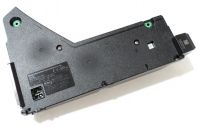 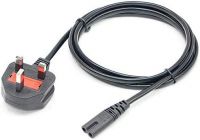
| |
| Sony PlayStation 5 Digital Edition | Input: 100-240V AC; Output: 12V DC | Output: 31 A | 200 W[10] | 1.3 W | 3.8 W | N/A | ADP-400DR | N/A | C7 non-polarized | Internal | The ADP-400DR is an internal power supply module, which can be accessed once the console is disassembled. To connect to an electrical outlet, the PS5 uses a standard Figure 8 AC cord. |  
| |
| Microsoft Xbox Series S | Input: 100-240V AC; Output: 12V DC | Input: 2.3 A; Output: 13.75 A | 74 W[12] | 0.4 W | 10 W | N/A | 1921 | M1111343-001 | C7 non-polarized | Internal | The Series S uses an internal power supply module, manufactured by LiteOn, which can be accessed once the console is disassembled. To connect to an electrical outlet, the console uses a standard Figure 8 AC cord | 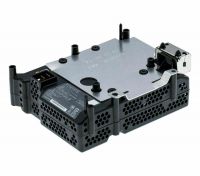 
| |
| Microsoft Xbox Series X | Input: 100-240V AC; Output: 12V DC | Input: 4.5 A (100-127V), 2.3 A (200-240V); Output: 21.25 A | 153 W[12] | 0.5 W | 13 W | N/A | 1920 | M1109865-006 | C7 non-polarized | Internal | The Series X uses an internal power supply module, manufactured by LiteOn, which can be accessed once the console is disassembled. To connect to an electrical outlet, the console uses a standard Figure 8 AC cord | 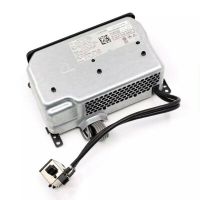 
|
References
- ↑ https://shmup.fandom.com/wiki/Tate_Mode
- ↑ https://www.doesitflip.com/
- ↑ https://shmups.system11.org/viewtopic.php?f=1&t=60868
- ↑ https://store.steampowered.com/curator/14416124/
- ↑ https://retronauts.com/article/946/the-comprehensive-list-of-flip-grip-friendly-vertical-games-for-switch
- ↑ http://www.gamepilgrimage.com/content/games-tate-mode-standard-definition
- ↑ https://www.reddit.com/r/NintendoSwitch/comments/85fqso/list_of_switch_games_that_support_nonstandard/
- ↑ 8.0 8.1 https://www.nrdc.org/sites/default/files/video-game-consoles-IP.pdf
- ↑ [1]
- ↑ 10.0 10.1 10.2 10.3 https://www.playstation.com/en-gb/legal/ecodesign/
- ↑ https://www.eurogamer.net/playstation-5-review-digitalfoundry
- ↑ 12.0 12.1 12.2 https://web.archive.org/web/20221118134519/https://support.xbox.com/en-US/help/hardware-network/power/learn-about-power-modes
- ↑ https://www.anandtech.com/show/11992/the-xbox-one-x-review/6
- ↑ https://www.nintendo.co.uk/Corporate/Consumer-Information/Eco-design/Information-about-energy-efficiency-and-eco-design-of-Nintendo-Switch-family-consoles-2026830.html